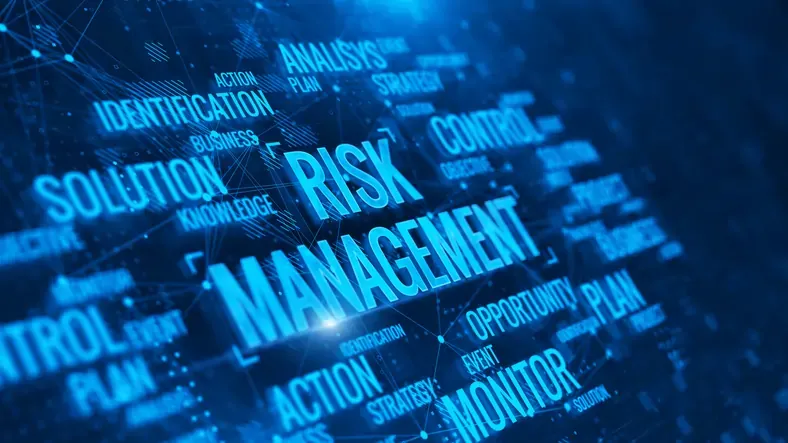
Imagine stepping into a world where time bleeds money, markets move in unpredictable rhythms, and a single misstep can send shockwaves across the global economy. With markets fluctuating without warning and regulations in constant flux, financial institutions must stay sharp, agile, and future-ready.
According to KPMG, 68% of financial services firms say AI in risk management and compliance functions is their top priority. This highlights the rise of new-age compliance frameworks in the finance industry and the need for a clear direction in that way. Additionally, data mismanagement has surged from the 7th to the 4th position on the list of operational risks, as reported by Risk & Compliance Platform Europe. These developments signal an urgent need to modernize risk frameworks and embrace real-time, data-driven decision-making to remain resilient.
Amidst these complexities, a leading global investment bank took bold steps to reshape its approach to risk management, leveraging cutting-edge technologies and innovative thinking. At the forefront of this transformation was Gaurav Malik, a visionary technologist with deep expertise in risk infrastructure. His strategic contributions not only boosted operational efficiency but also fortified the firm’s defenses against market volatility and regulatory risks.
During his tenure, Gaurav led the overhaul of the institution’s risk assessment frameworks. He championed the development of an automated risk modeling system that enabled real-time analysis of market exposure using live data, historical trends, and predictive algorithms. This initiative drastically reduced the time required to assess risk across asset classes, allowing for faster, more proactive responses to potential disruptions.
Gaurav also revolutionized the bank’s credit risk assessment processes. Traditional models, heavily reliant on outdated systems and manual workflows, were no match for today’s dynamic markets. By integrating machine learning capabilities, he significantly enhanced the firm's ability to identify and assess counterparty risk. This predictive power helped risk managers make better-informed decisions, minimizing default risks and strengthening the firm’s financial stability.
Recognizing the complexity of modern financial regulations, Gaurav played a key role in operationalizing compliance automation. He helped design and implement an AI-driven compliance monitoring system that flagged potential breaches in real time. This drastically improved the institution’s ability to adhere to global regulatory standards while reducing operational drag.
Gaurav’s innovations also extended to cybersecurity. He led the transformation of Splunk from a basic log aggregation tool into a dynamic, real-time security intelligence platform. His team’s deployment of Tanium enabled automated patching across more than 50,000 servers, ensuring compliance and minimizing security gaps. Additionally, the integration of predictive risk analytics helped reduce downtime caused by security incidents and boosted operational efficiency.
He also initiated the development of a centralized cyber risk portfolio, providing executives with clear insights into the organization’s cyber hygiene and helping inform strategic resource allocation. By redefining the firm’s Risk Control & System Assessment methodology and implementing scenario-based business continuity training for IT engineers, Gaurav ensured swift, effective responses to cyber threats, without compromising business continuity.
In an industry where oversight can cost millions in losses or fines, failing to modernize risk systems is a gamble no firm can afford. Without the initiatives led by Gaurav, the institution could have faced delayed risk detection, increased financial exposure, and potentially catastrophic regulatory failures. His efforts helped the firm avoid the pitfalls that have plagued underprepared financial institutions and underscored the need for proactive, technology-led risk management.
Gaurav Malik’s work exemplifies how technology can redefine risk management. His contributions in automation, predictive analytics, and compliance intelligence not only strengthened his organization’s financial defenses but also set new industry standards. He demonstrated that the intersection of finance and technology isn’t just an innovation, it’s a necessity for survival in today’s market.
Reflecting on his journey, Gaurav shares,
“In the current financial landscape, risk is not just about mitigation; it’s about intelligent adaptation. Leveraging technology to forecast and navigate financial uncertainties is crucial to building a more resilient future. At this organization, I had the opportunity to drive this change, ensuring that risk management was not just reactive, but proactive and predictive.”
As financial markets evolve at an unprecedented pace, the role of technology in safeguarding institutions has never been more critical. With data-driven decision-making now central to success, innovative professionals like Gaurav Malik are shaping the future of financial risk management, creating smarter, stronger, and more adaptive institutions ready to thrive in a world of constant change.
About Author:
Michael Cain is a NewsBreak contributor and an Editor at Springer Nature, focusing on tech-driven narratives and financial reporting. With a background spanning artificial intelligence, cloud computing, and emerging fintech innovations, Michael has authored pieces like “AI-Powered Merchant Risk Assessment” and “Breaking New Ground in Data Security,” spotlighting cutting-edge solutions that shape modern businesses. Equally at home analyzing corporate earnings or exploring advanced technology trends, Michael aims to bridge the gap between complex concepts and everyday impact.
Connect with him at [email protected] for insights into the evolving frontiers of tech, finance, and beyond.


